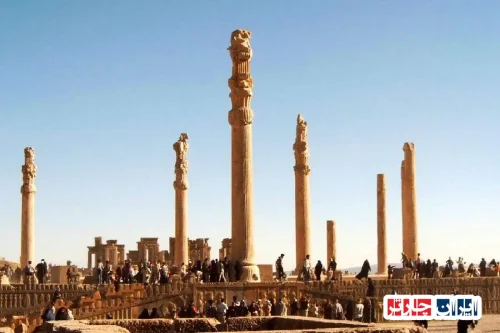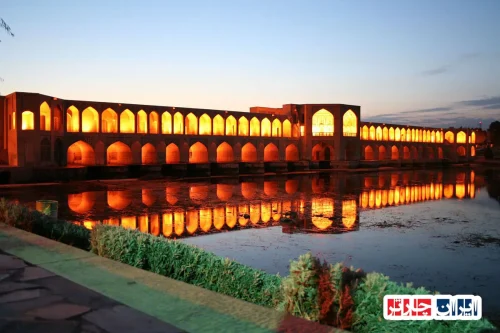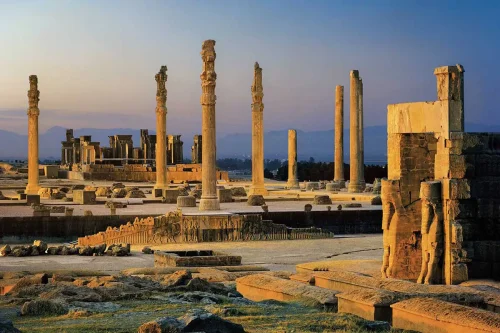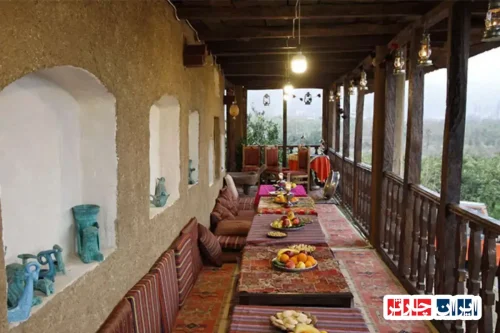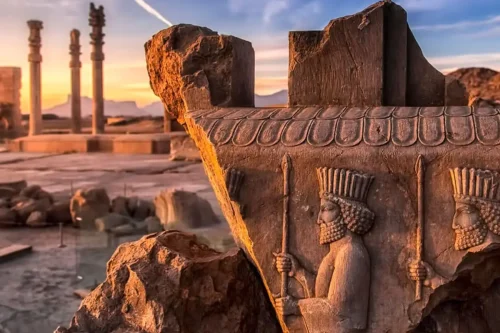News Source : https://www.irna.ir/news/85644549/%D8%A2%D9%81%D8%B1%DB%8C%D9%82%D8%A7%DB%8C-%D8%A7%DB%8C%D8%B1%D8%A7%D9%86-%DA%A9%D9%88%DB%8C%D8%B1%DB%8C-%D8%AF%D8%B1-%DA%AF%D8%B1%D9%85%D8%B3%D8%A7%D8%B1-%DA%AF%D9%87%D9%88%D8%A7%D8%B1%D9%87-%D8%A7%DB%8C-%D8%A8%D8%B1%D8%A7%DB%8C-%D8%B7%D8%A8%DB%8C%D8%B9%D8%AA-%D9%88-%D8%AD%DB%8C%D8%A7%D8%AA
Iran’s Africa: A Desert Cradle for Wildlife in Garmsar + Video
“Iran’s Africa” Desert in Garmsar: A Unique Destination for Nature Lovers
The Garmsar National Park is known as “Iran’s Africa” and is considered one of the most attractive tourist destinations in the Semnan province due to its unique diversity of flora and fauna. The desert, home to 34 species of mammals, 155 species of birds, 34 species of reptiles, and 355 species of plants, has become an excellent spot for studying and observing wildlife. Thousands of local and international tourists visit this area each year to enjoy its natural beauty and rare wildlife species.
Diversity of Animal Species in Garmsar National Park
The Garmsar National Park hosts a variety of wild animal species, some of which are unique to Iran. Notable species include gazelles, cheetahs, sand cats, hyenas, and leopards. Additionally, birds of prey like the golden eagle and falcons are also bred in the area. The presence of these rare animal species makes Garmsar Park a cradle for nature and wildlife.
Unique Vegetation in “Iran’s Africa”
With its desert and semi-desert vegetation, Garmsar provides a suitable environment for the growth of various drought-resistant plants. Species like succulents, palm trees, and other drought-tolerant plants thrive in this region. This plant diversity not only aids in ecosystem sustainability but also provides a suitable habitat for many animal species.
Wildlife Conservation Efforts in Garmsar Park
Wildlife conservation in Garmsar National Park is a top priority for the park authorities. Through collaboration with local hunters and the implementation of regulated tourism initiatives, efforts are made to preserve and protect rare species. Advanced monitoring technologies are also used to track and protect the sensitive species from extinction.
Regulated Tourism in “Iran’s Africa”
The implementation of regulated tourism in Garmsar National Park aims to preserve the environment and enhance tourists’ experiences. With the necessary permits and specialized guides, high-quality and responsible tours are offered in this region, allowing tourists to enjoy the natural beauty and wildlife without harming the local ecosystem.
Challenges in Protecting Garmsar National Park
A major challenge in protecting Garmsar National Park is the shortage of environmental rangers and the lack of proper monitoring equipment and vehicles. Additionally, issues related to excessive use of water resources and human pressures are problems that need to be addressed. Accurate planning and close cooperation among various departments are needed to address these challenges.
Importance of Water Resources in Preserving Garmsar’s Wildlife
Water resources play a vital role in preserving wildlife in Garmsar National Park. Due to the area’s dry climate, the identification of springs and watering places is of special importance. The Garmsar National Park Authority continuously monitors these resources to ensure that vital water supplies for animals and plants are maintained and prevent them from drying up.
Experiences and Training of Hunters in Wildlife Conservation
In line with wildlife conservation, local hunters have become aware of their role in preserving rare animal species by participating in training courses organized by the Department of Environment Protection. These training programs not only increase the hunters’ knowledge but also motivate them to cooperate in environmental conservation. Hunters’ collaboration is a crucial link in preserving Garmsar National Park’s wildlife.
Revival of the Asian Wild Ass in Garmsar
One of the standout actions in Garmsar National Park is the revival of the Asian wild ass species. Previously extinct in this region, the species has been reintroduced by transferring new generations to the park. These initiatives have fuelled hope that the Asian wild ass population will soon reach a desirable level and play an essential role in balancing the regional ecosystem.
Natural and Historical Attractions of Garmsar
Garmsar National Park is not only rich in natural attractions but also possesses historical landmarks. Structures like Qasr-e Bahram and Qiluqe Water Reservoir are among the sites that tourists can visit. This combination of natural and historical attractions has turned Garmsar Park into a complete and premium destination for tourists.
Frequently Asked Questions
- What is the Garmsar Desert National Park known as?
- The Garmsar Desert National Park is known as “Iran’s Africa”.
- Why is the Garmsar Desert National Park famous as “Iran’s Africa”?
- Due to its high diversity of flora and fauna, mild winters and hot summers, and the presence of rare animal species, this area is famous as “Iran’s Africa”.
- What permit is required to visit Garmsar Desert National Park?
- To visit Garmsar Desert National Park, you need a permit from the Garmsar National Park Authority or the Department of Environment Protection of Semnan Province.
- How many mammal species does Garmsar Desert National Park have?
- Garmsar Desert National Park has 34 mammal species.
- What are the notable mammals found in Garmsar Desert National Park?
- Notable mammals include gazelles, cheetahs, sand cats, goats, mountain goats, rams, ewes, leopards, caracals, sand foxes, common foxes, hyenas, wolves, jackals, hares, porcupines, and various rodents.
- How many bird species are there in Garmsar Desert National Park?
- The park is home to 155 bird species.
- What types of reptiles are found in Garmsar Desert National Park?
- Reptiles in the park include horned vipers, Jafari snakes, desert monitor lizards, and more.
- What are the main challenges in protecting Garmsar Desert National Park?
- Main challenges include the shortage of environmental rangers and lack of proper equipment and vehicular facilities.
- What are the goals of regulated tourism in Garmsar Desert National Park?
- The goal of implementing regulated tourism is to protect the wildlife habitat and preserve rare species within Garmsar Desert National Park.
- How large is Garmsar Desert National Park?
- The park covers an area of 442,000 hectares.
- How many ranger stations are active in Garmsar Desert National Park?
- There are four ranger stations with 12 personnel actively operating.
- How do hunters participate in the conservation of Garmsar Desert National Park?
- Hunters participate by implementing the “Participatory Protection” plan and attending training courses organized by Semnan’s Department of Environmental Protection.
- What is the status of the Asian wild ass population in Garmsar Desert National Park?
- The Asian wild ass has been revived and bred in Garmsar Desert National Park since 2018, with eight foals born by 2024.
- How are water resources monitored in Garmsar Desert National Park?
- Water resources are monitored continuously throughout the year, especially in summer. There are 30 springs and 90 watering places that undergo annual maintenance and restoration.
- How many tourists visit Garmsar Desert National Park annually?
- Annually, an average of 3,500 local and international tourists visit the natural and historical attractions of Garmsar Desert National Park.
- What categories of tourists travel to Garmsar Desert National Park?
- Tourists fall into three categories: eco-tourists interested in natural attractions and wildlife, visitors to historical sites like Qasr-e Bahram and Qiluqe Water Reservoir, and those passing through Garmsar Desert en route to other destinations.
- What plant species are found in Garmsar Desert National Park?
- Garmsar Desert National Park hosts 355 plant species that thrive in desert and semi-desert vegetation.
- What measures have been taken to revive the Asian wild ass in Garmsar Desert National Park?
- Since 2018, efforts have been made to revive and breed the Asian wild ass, and in 2023, a male wild ass was introduced for genetic modification purposes.
- What bird species exist in Garmsar Desert National Park?
- Important bird species include the saker falcon, golden eagle, vulture, kestrel, birds of prey like partridge, see-see partridge, owl, lark, wagtail, magpie, raven, and various sparrows.


